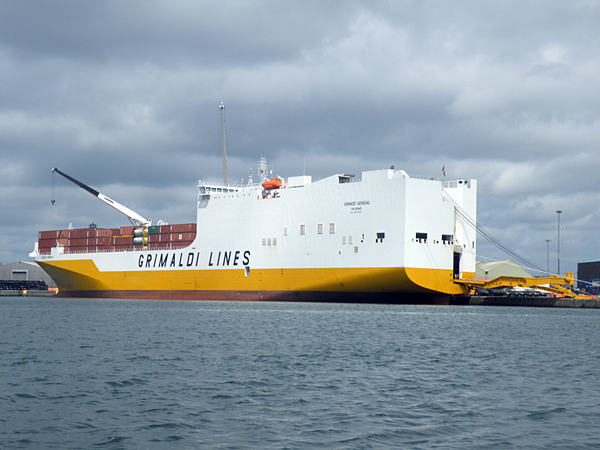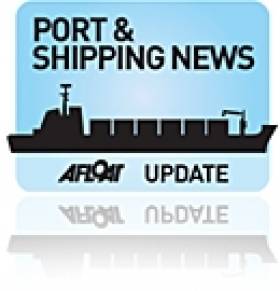Displaying items by tag: Irish Defence Forces
Italians Bring Home Irish Military Equipment from Africa
On Monday 26 July, the Grande Senegal, a brand new vessel that was only launched this year for Italian shipping giant, Grimaldi Lines, docked in Dublin after a 9,600km voyage from Douala, Cameroon, along Africa's mid-western coast.
Onboard was a large-scale consignment of Irish Defence Forces military equipment from Chad, writes Jehan Ashmore.
The charter of the 47,218 gross tonnes marked the final phase in the withdrawel since April of Irish Defence Forces from UN-peacekeeping duties in the troubled land-locked central African state. The Irish-based troops had already flown home in advance of the military hardware.
In total, 3,000 tonnes of equipment was shipped which included 208 TEU (20-foot long containers) 75 trucks, 4x4s, armoured vehicles and an assortment of trailers and fuel bowsers.
The cargo was first moved from Defence Force facilities based at Goz Beida, in eastern Chad, across 900km of desert to the Chadian capital, N'Djamena. From there the equipment was divided with sensitive cargo flown to the port of Douala. The remaining cargo was taken on another 900km road-trip to Ngaoundere, in northern Cameroon. Upon arrival at Ngaoundere, the cargo was transferred by rail for 650km to Douala, finally completing the journey to the African port.
The transportation was undertaken during the impending threat of the rainy season which can pose serious difficulties for all modes of
wheeled transport to the extent that renders progress to be difficult if not impossible. The major logisticical exercise was one of the most
challenging operations experienced by the Defence Forces.
With the equipment loaded at Douala, Grande Senegal set sail on 13 July bound for Dublin. The long-distance passage took a fortnight to arrive at Dublin, where the ConRo (Containers and Roll-On Roll-Off) vessel discharged vehicles through the stern-mounted door ramp.
Once the equipment was disembarked at the quayside, the Gardai and Defence Forces provided joint escorts to the vehicle-conveys, to ensure a speedy exit out of the port, destined for military barracks. Grande Senegal is one of seven Grande 'Angola' class newbuilds built at the Uljanik Shipyard, Pula, Croatia. Each 210 metre-long ConRo vessel can combine a load of 2000 vehicles and 800 TEU, or alternatively a maximum of 1,360 TEU. The Grande Senegal departed Dublin the next day for Amsterdam.

























































